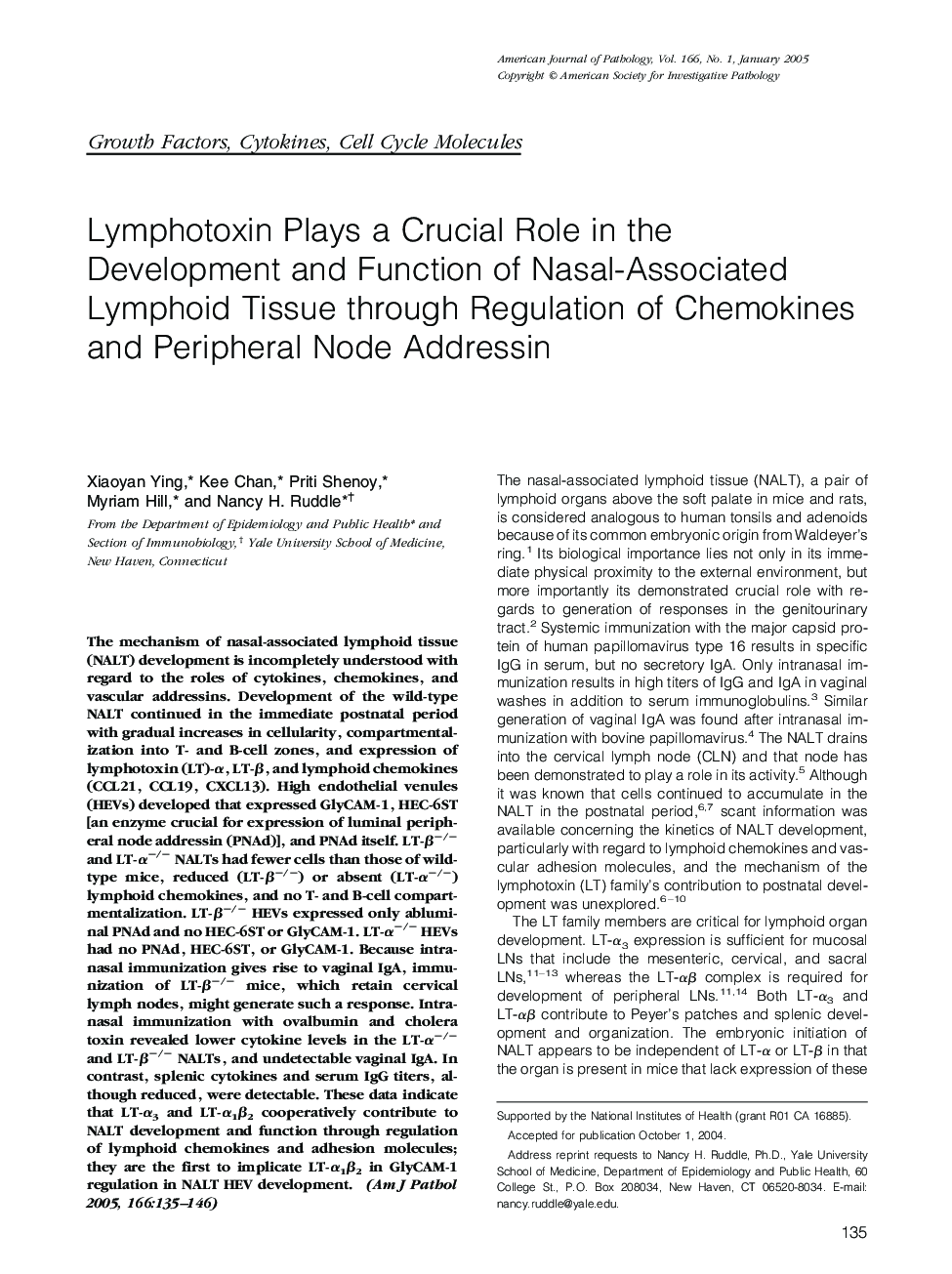| Article ID | Journal | Published Year | Pages | File Type |
|---|---|---|---|---|
| 9943494 | The American Journal of Pathology | 2005 | 12 Pages |
Abstract
The mechanism of nasal-associated lymphoid tissue (NALT) development is incompletely understood with regard to the roles of cytokines, chemokines, and vascular addressins. Development of the wild-type NALT continued in the immediate postnatal period with gradual increases in cellularity, compartmentalization into T- and B-cell zones, and expression of lymphotoxin (LT)-α, LT-β, and lymphoid chemokines (CCL21, CCL19, CXCL13). High endothelial venules (HEVs) developed that expressed GlyCAM-1, HEC-6ST [an enzyme crucial for expression of luminal peripheral node addressin (PNAd)], and PNAd itself. LT-βâ/â and LT-αâ/â NALTs had fewer cells than those of wild-type mice, reduced (LT-βâ/â) or absent (LT-αâ/â) lymphoid chemokines, and no T- and B-cell compartmentalization. LT-βâ/â HEVs expressed only abluminal PNAd and no HEC-6ST or GlyCAM-1. LT-αâ/â HEVs had no PNAd, HEC-6ST, or GlyCAM-1. Because intranasal immunization gives rise to vaginal IgA, immunization of LT-βâ/â mice, which retain cervical lymph nodes, might generate such a response. Intranasal immunization with ovalbumin and cholera toxin revealed lower cytokine levels in the LT-αâ/â and LT-βâ/â NALTs, and undetectable vaginal IgA. In contrast, splenic cytokines and serum IgG titers, although reduced, were detectable. These data indicate that LT-α3 and LT-α1β2 cooperatively contribute to NALT development and function through regulation of lymphoid chemokines and adhesion molecules; they are the first to implicate LT-α1β2 in GlyCAM-1 regulation in NALT HEV development.
Related Topics
Health Sciences
Medicine and Dentistry
Cardiology and Cardiovascular Medicine
Authors
Xiaoyan Ying, Kee Chan, Priti Shenoy, Myriam Hill, Nancy H. Ruddle,
